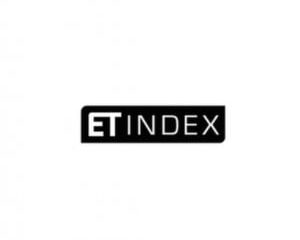

Economy
ET Index blog series: Including the full Scope of a company’s carbon emissions
Having established in previous posts what is at stake with climate change, it ought to be clear to anyone that we need to limit greenhouse gas emissions. In concrete terms emissions represent the physical source of the problem. Sam Gill, CEO of ET Index writes.
Given that today’s economy is dominated by private corporations and historically just 90 companies caused two-thirds of man-made carbon emissions, if we are to have any chance of tackling the problem we need to incentivise companies and their supply chains to cut emissions.
If we are going to ask companies to cut emissions then we need a global, standardised accounting system for measuring emissions in a way that is comparable across companies. Luckily we have such a system in the one that has been developed by the Greenhouse Gas Protocol. This is the most widely accepted international accounting standard. It categorises emissions by three Scopes: Scope 1 direct emissions over which a company has control; Scope 2 indirect emissions relating to the use of purchased electricity; and Scope 3 (supply chain) emissions.
Scope 3 (supply chain) emissions are best understood as those over which a company has influence but not direct control. For example, an oil company controls the machinery that gets the stuff out of the ground but the real carbon impact occurs when the oil is burnt by the end user. This is not something over which they have direct control, but they certainly have influence. Likewise, if a company sends all its employees back and forth between London and Tokyo every week, it does not directly control the emissions relating the aircraft but they have influence by virtue of stimulating increased demand.
Failure to include such emissions when looking at a company’s carbon footprint effectively means that emissions can be ‘outsourced’ to another company with the carbon balance sheet being wiped clean. Clearly that is not very helpful the point of view of actually tackling the problem at hand, which is the emissions.
Some critics argue that this leads to double counting, since one company’s direct emissions may be another company’s indirect emissions. Surely, it is better to count them twice than not count them at all!
But in any case the reasons for inclusion by far outweigh the disadvantages of exclusion. Notably Scope 3 emissions typically account for more than three quarters of a company’s total carbon footprint, meaning they represent a significant source of ‘carbon risk’. As we know companies do not exist in isolation from their supply chains. Even if an oil company is not responsible for the end user turning its product into greenhouse gas emissions, it will still be affected by regulation limiting carbon emissions. Moreover, if we are going to incentivise companies to lower emissions, then it would be an opportunity missed if we failed to create an incentive for companies in their supply chains to lower emissions as well.
As we will explore in the last post of this series, one of the core tenets of Environmental Tracking is the inclusion of a company’s full scope of emissions. This is done so that any incentive applied to the largest companies listed on the stock market percolates down through the wider economy, transcending international borders, as it is passed onto smaller companies in their supply chain. Indeed this is where the real power of targeting the largest listed companies globally lies – by being able to reach far beyond them.


 Environment10 months ago
Environment10 months agoAre Polymer Banknotes: an Eco-Friendly Trend or a Groundswell?

 Environment11 months ago
Environment11 months agoEco-Friendly Home Improvements: Top 7 Upgrades for 2025

 Features9 months ago
Features9 months agoEco-Friendly Cryptocurrencies: Sustainable Investment Choices

 Features10 months ago
Features10 months agoEco-Friendly Crypto Traders Must Find the Right Exchange

























